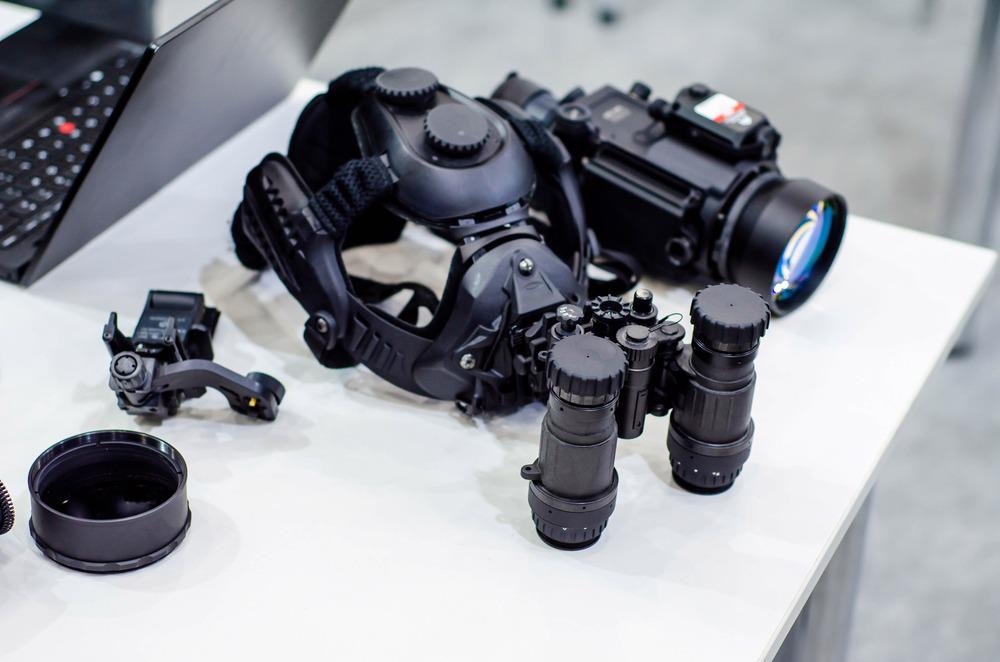Thermal camouflage has the potential to be a game-changing technology in sectors such as military hardware. A new paper published online in the International Journal of Thermal Sciences has presented a novel and simple design method for thermal camouflage devices.

Study: Thermal camouflages based on 3D thermal-null medium [online] International Journal of Thermal Sciences. Image Credit: Lutsenko_Oleksandr/Shutterstock.com
Camouflage: An Evolving Field of Materials Design
Over the past century, camouflage design has mainly been based on textile and paint patterns that help humans and equipment blend into their environment. Whilst effective, these types of camouflage are crude, and people and objects can be easily detected by infrared cameras. The development of ever-more sophisticated and effective camouflage technologies has been a key research focus in the defense industry.
Nature provides inspiration for many technologies, and natural camouflage is a dynamic phenomenon. Animals have evolved to avoid predators using several biological techniques, including dynamic body patterns as well as color-changing properties and adaptive optical and sonic transparency in some species. Biological inspiration has led to the development of several innovative camouflage techniques, including bionic adaptive robots, radar deception technologies, and optical Janus effect camouflages.
Thermal Camouflage
Amongst the various camouflage technologies that have been developed in recent years, thermal camouflage is particularly advantageous as it obfuscates the real thermal characteristics of humans and equipment. Size, shape, position, and quantity can be hidden from infrared devices effectively.
In recent years, transformation thermotics, which is a design method based on transformation optics, has been used to design several devices with thermal camouflage capabilities. Devices with various novel thermal control functions such as thermal cloaks, thermal diodes, thermal memory, thermal inversion, thermal memory, and thermal encryption printing have been researched and developed.
However, there are drawbacks to current thermal camouflage technologies. They are only able to create in-plane thermal illusions by, for example, manipulating temperature field distribution and heat flow within two-dimensional flat surfaces. They are unable to effectively create out-of-plane thermal camouflages where the object’s thermal field distribution can be transferred to another surface according to a pre-designed distribution.
Additionally, designing devices with out-of-plane functions is complex, requiring a vast number of mathematical calculations. The optimal material parameters of these devices are different for achieving different camouflages using transformation thermotics methods. There is a critical lack of study on designing devices that can achieve out-of-plane thermal camouflage with a simple design process and realizable material parameters.
The Study
The study published in the International Journal of Thermal Sciences has presented a novel method for designing devices with out-of-plane thermal camouflage functions that possess superior performance to currently available design paradigms.
The approach set forth in the research involves a simple block building method based on thermal-null medium (TNM.) TNM is derived from transformation thermotics using the graphical design method of extreme spatial stretching transformation. Compared to conventional thermal camouflage design, TNM is a highly anisotropic medium.
TNM can, thus, function as a thermal fiber, able to project the thermal field distribution along its main axis. 2D TNM has been realized in previous studies, with materials such as layered copper and expanded polyurethane utilized in the design to achieve in-plane controls such as thermal buffering. 3D TNMs are not yet fully realized in the literature, with very few studies focusing on them.
More from AZoM: Differential Thermal Analysis of Technical Ceramics
The authors behind the research have presented a novel 3D TNM design using arrays of specially oriented copper rods and air pockets embedded in plates of polyurethane. The main axis of the device corresponds with the orientation of the rods. The device possesses a directional thermal projecting feature.
Based on this feature, several basic components were designed for specific thermal camouflage purposes such as thermal splitting, thermal shifting, thermal deforming, and thermal compression. Fabrication of devices which have pre-designed out-of-plane thermal characteristics was achieved by combining and assembling the various proposed thermal components.
The block building design of the proposed devices facilitates a much simpler production method than current technologies. Tensor calculations and coordinate transformations are unnecessary. The same material can be used to realize a multitude of functions by simply embedding copper rod-air arrays with different orientation angles and filling factors.
Simulations and practical experiments were used to verify the performance of the proposed devices in the study. The proposed technique for designing thermal camouflage with tunable out-of-plane functions overcomes the current issues with 2D technologies, opening the possibility for a new generation of thermal camouflage for sectors such as the defense industry.
Further Reading
Chen, H et al. (2022) Thermal camouflages based on 3D thermal-null medium [online] International Journal of Thermal Sciences 176 107506 | sciencedirect.com. Available at: https://www.sciencedirect.com/science/article/abs/pii/S1290072922000461
Disclaimer: The views expressed here are those of the author expressed in their private capacity and do not necessarily represent the views of AZoM.com Limited T/A AZoNetwork the owner and operator of this website. This disclaimer forms part of the Terms and conditions of use of this website.